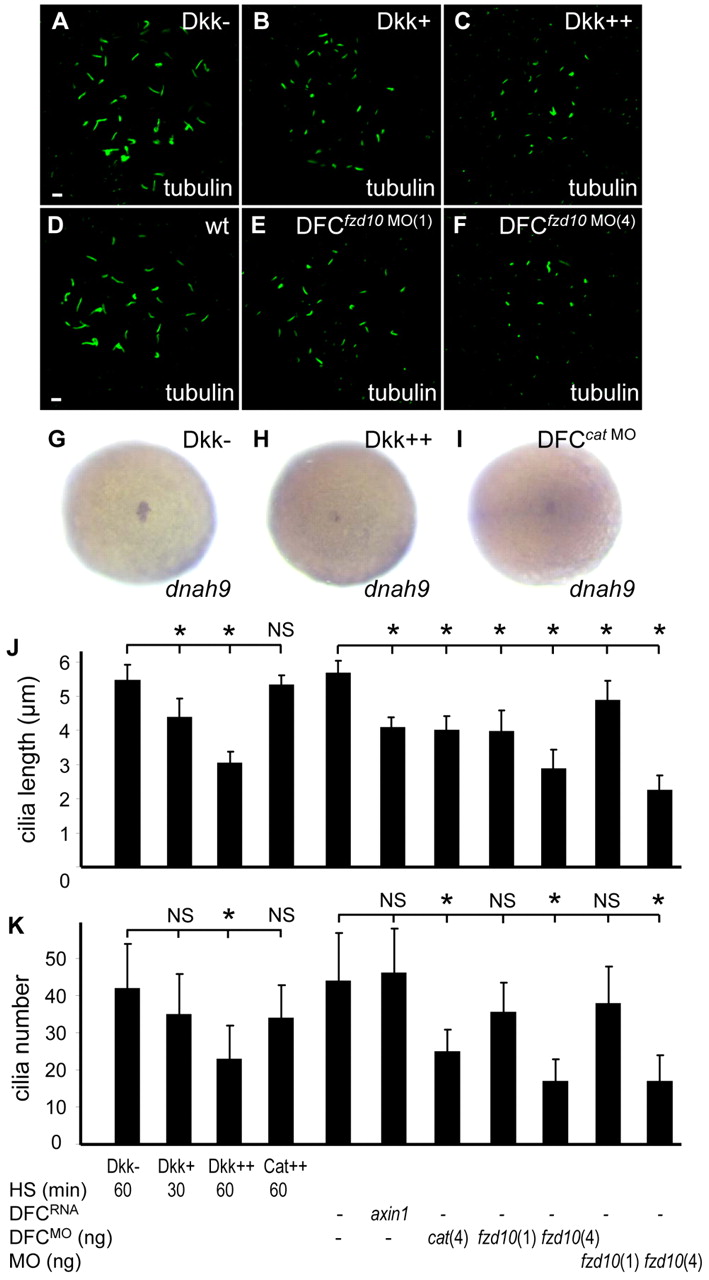Fig. 2
Reduction of Wnt signaling results in shorter and fewer cilia in KV. (A-F) Dose-dependent effect of Wnt signaling on cilia length and number. (A-C) Tg(hsp:dkk1-GFP) fish were bred with wild-type fish. Their progenies were heat shocked at 60% epiboly for 30 minutes (B) or 60 minutes (C) to induce Dkk1 expression. Moderate induction of Dkk1 (Dkk+) resulted in shorter cilia (B) whereas higher level of Dkk1 induction (Dkk++) led to shorter and fewer cilia (C). (D-F) DFC-targeted injection of 1 ng of fzd10 MO reduced cilia length, but not number (E); 4 ng of MO reduced both cilia length and number (F). Cilia were visualized by anti-acetylated tubulin antibody staining of 10-somite staged embryos. Scale bars: 5 μm. (G-I) Wnt signaling is essential for dnah9 expression in DFCs. Dkk1 induction (H) or DFC-targeted injection of β-catenin1 MO (I) downregulated dnah9 expression. Shown are ventral views of 95% epiboly staged embryos. (J,K) Quantification of cilia length (J) and number (K) in 10-somite staged embryos. Approximately 12-16 embryos were analyzed for each group. Tg(hsp:β-catenin-GFP) fish were bred with wild-type fish. Their progenies were heat shocked at 60% epiboly for 60 minutes to induce β-catenin1 (Cat++) expression. Data are represented as mean±s.d. *P<0.01. NS, not statistically significant.

